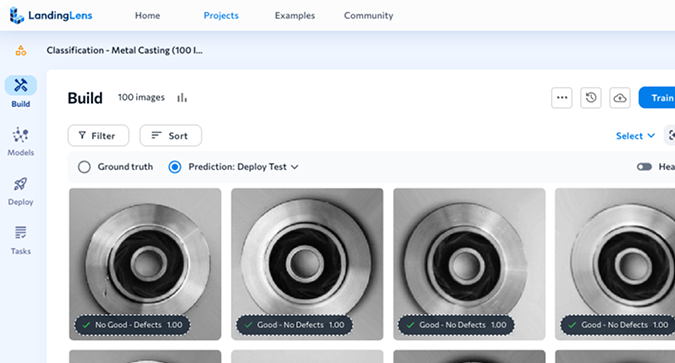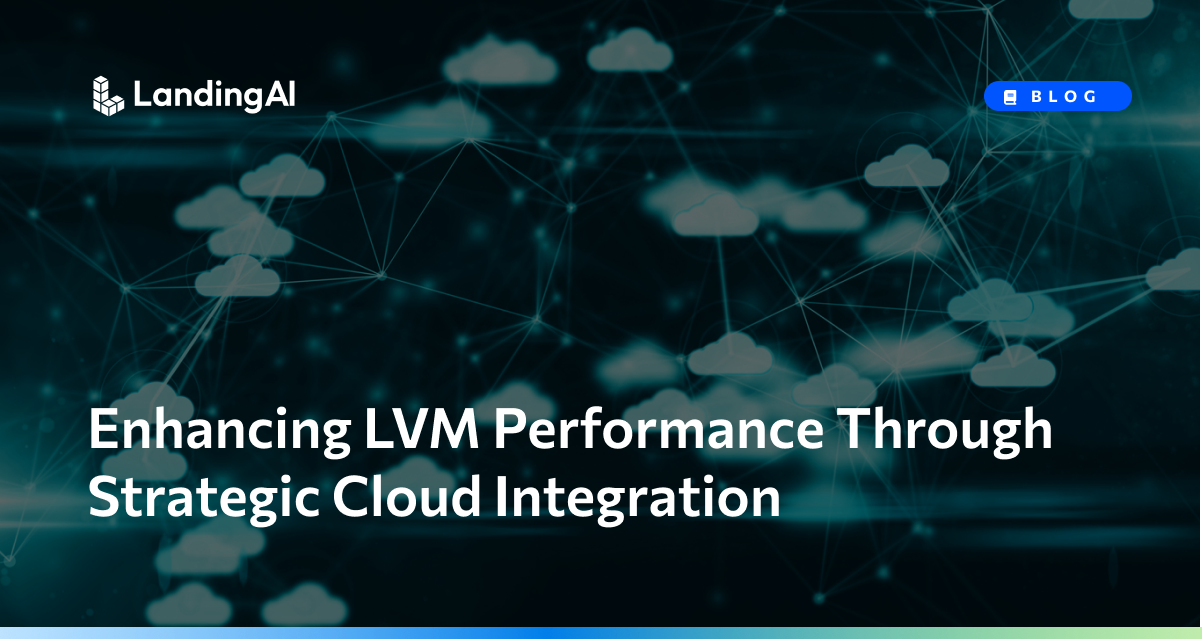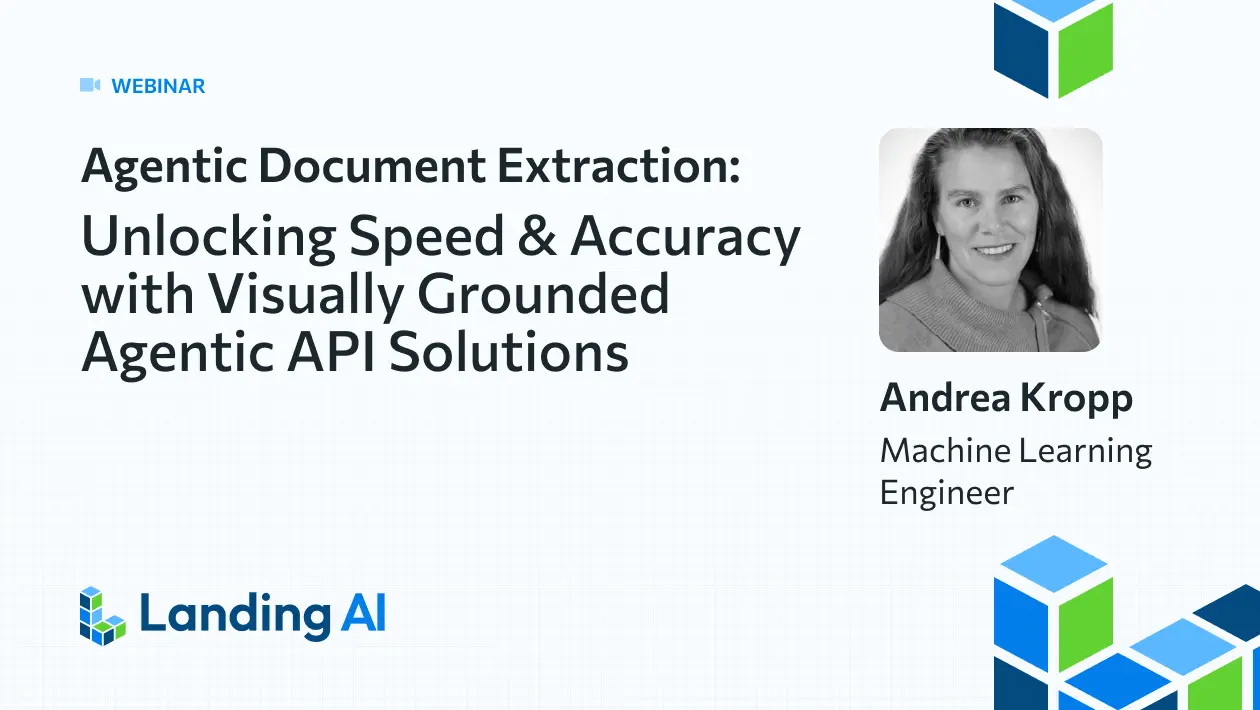Staying ahead in business means embracing the tools and strategies that transform challenges into opportunities. One such game-changer is the integration of Large Vision Models (LVMs) with cloud computing — a fusion that’s setting a new benchmark for operational efficiency and innovation in AI-driven visual data analysis.
At the heart of this transformation are LVMs, which are AI systems that can decipher and analyze visual data at an unprecedented scale. Think of LVMs as the brainpower behind systems that can identify products in images for e-commerce, automate quality checks in manufacturing, or even analyze satellite imagery for environmental monitoring. The potential is limitless, but so are the computational demands.
Cloud computing is the backbone that offers this brainpower the flexibility and scalability it needs to operate efficiently. The cloud is a strategic asset that, when paired with LVMs, unlocks new levels of performance and agility for businesses. This synergy allows companies to scale their operations, improve the speed and accuracy of visual data analysis, and innovate in ways previously unattainable.
The Cloud Advantage
Scalability is the first major win. Cloud platforms can allocate resources to meet the intensive computational needs of training and running LVMs. This means whether you’re a startup experimenting with new products or an established company managing millions of images, the cloud scales with your needs without the upfront cost of traditional IT infrastructure.
Flexibility follows closely. The cloud’s on-demand nature means you can experiment and iterate on LVM applications faster, reducing the time from concept to deployment. This agility is crucial for staying competitive in today’s fast-paced market.
Innovation is the ultimate goal. By reducing the barriers to entry for advanced visual data analysis, cloud-integrated LVMs democratize access to cutting-edge AI, opening the door for businesses of all sizes to innovate and transform their industries. A notable example from Landing AI involves an AI solution that enhances shelf space calculations in retail stores, which demonstrates how combining cloud capabilities with large vision models can significantly improve the efficiency and accuracy of inventory management. This approach increases operational scalability and offers a model for similar implementations in diverse sectors.
Navigating the Challenges
However, integrating LVMs with the cloud isn’t without its hurdles. Data privacy stands out, particularly with the sensitive nature of visual data. Businesses must navigate this by employing robust encryption, access controls, and compliance with data protection laws to safeguard user privacy.
Cost is another consideration. While cloud computing offers scalability, managing costs effectively requires a strategic approach to resource allocation, choosing the right services, and optimizing LVM architectures for efficiency.
Lastly, the complexity of deploying and managing LVMs in the cloud demands expertise. Leveraging managed services, automation, and serverless computing can simplify operations, allowing businesses to focus on their core competencies.
Strategies for Ensuring Security and Compliance in Cloud-Based LVMs
In the realm of cloud-integrated LVMs, security and compliance are foundational pillars that safeguard the integrity of visual data and the trust of stakeholders. As the processing and analysis of visual data become increasingly integral to business operations, ensuring that these systems are secure and comply with regulatory standards is paramount. Here are strategic approaches to embedding security and compliance into the fabric of your cloud-based LVM initiatives:
1. Prioritize security from the get-go.
Security and regulatory compliance must be ingrained in the project from its inception — not retrofitted as an afterthought. This proactive approach is crucial for avoiding potential pitfalls that could compromise the launch or ongoing operation of your LVM applications. Start by conducting a comprehensive assessment of the compliance requirements relevant to your industry and the types of data you’ll be handling, such as GDPR for personal data protection in the EU or HIPAA for health information in the U.S. This foundational step ensures your project aligns with legal standards and best practices from the start.
2. Implement continuous monitoring and auditing.
The dynamic nature of cloud-based LVMs requires a vigilant approach to security and compliance. Implementing continuous monitoring allows for real-time oversight of system activities, user interactions, and data access patterns. This level of vigilance enables immediate detection and response to potential security threats or compliance breaches. Complement this with comprehensive audit logs that record all system activities and user interactions, which provides a detailed account for periodic audits. These audits are crucial for identifying anomalies or lapses in compliance and facilitating prompt corrective measures.
3. Automate compliance checks.
Regulatory requirements are ever-evolving, so automated compliance checks are critical for maintaining your LVM’s alignment with current standards. By leveraging automation tools for compliance monitoring and reporting, you can ensure continuous assessment of your systems’ compliance posture. These tools enhance efficiency and provide the agility to adapt to changes in the regulatory landscape and your LVM functionalities. Ensuring your compliance checking processes are efficient, effective, and up-to-date mitigates the risk of non-compliance and its associated repercussions.
Embracing the Future with Cloud-Integrated LVMs
The integration of Large Vision Models with cloud computing is more than a technological trend; it’s a strategic imperative for businesses seeking to lead in the AI-driven future. By following these practical steps and considerations, organizations can navigate the complexities of implementation, unlock the full potential of their visual data, and achieve transformative results.
As we vault into the digital frontier, the fusion of Large Vision Models and cloud computing isn’t a mere evolution — it’s a revolution. This powerhouse combination heralds a new era of innovation, where the boundaries of visual data analysis are pushed to their limits and beyond. Businesses poised at this cutting-edge intersection are defining the vanguard of an AI-driven epoch.
This is more than an opportunity; it’s our new reality. Seize it, and let’s redefine what’s possible together.






